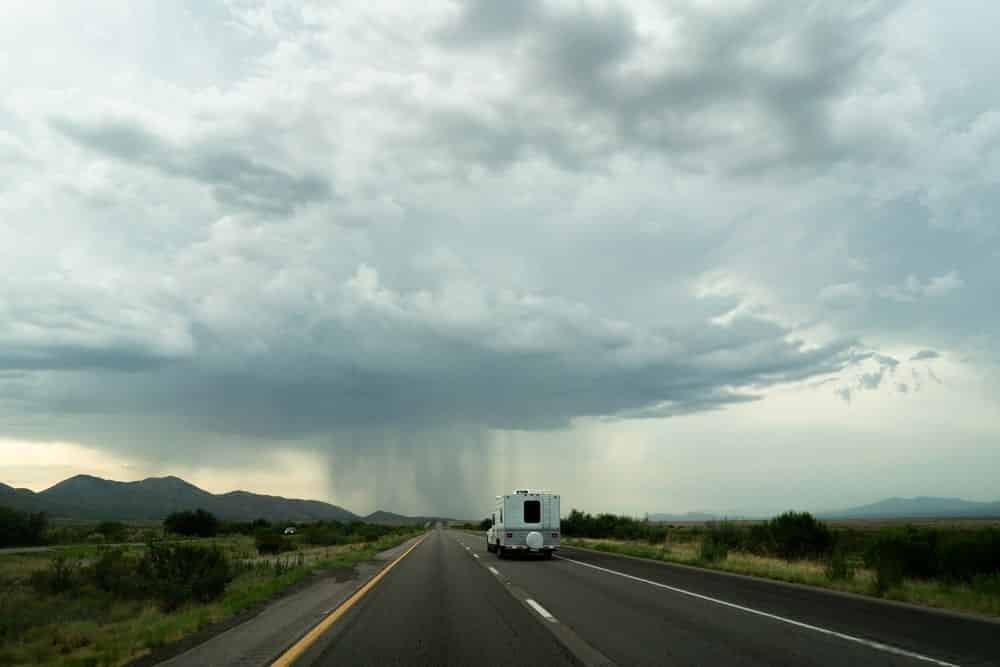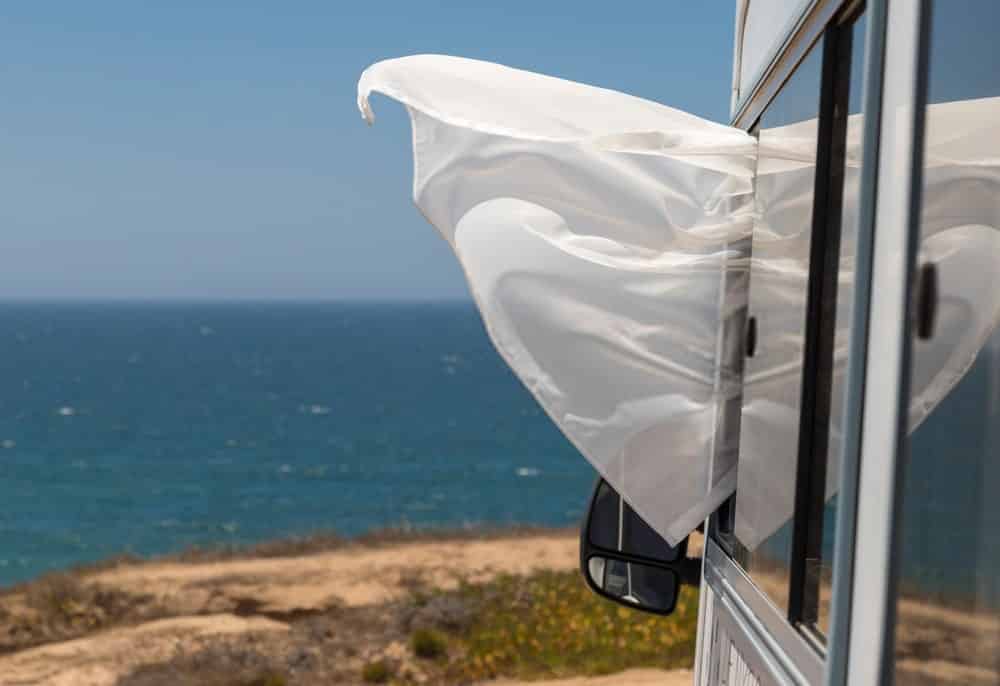Living full-time in an RV has its own pros and cons. While it has many advantages over living in a traditional home, you need to be extra careful during natural disasters. What is the local weather forecast announces an upcoming storm at 65 mph? The first question you might be thinking is how much wind can an RV withstand?
Driving a motorhome or with a camper in the back in high wind is a daunting task. This is not an experience anyone would look forward to, but no one can avoid it either.
If you are an RV owner, you must be willing to know how much wind does it take to flip a trailer or what are the techniques of driving RV in windy conditions. Learning accurate information about these topics is crucial for safe driving in hostile weather conditions.
Contents
How Does Wind Affect Your RV Driving?
It is essential to know how the wind plays part in driving before knowing how much wind can an RV withstand. If you are driving or towing an RV in heavy wind, it can veer into a side lane due to losing control.
So, high winds could be dangerous, not only for you but for other drivers on the road. Cross or side winds that blow from the side of RV are the culprits that make the vehicle swerve. The veering ultimately adds to the wind’s force and flip the RV over.
In contrast, headwinds are totally different from the side winds. Winds coming straight can make your car bump, an incident known as bucking. Though these winds are comparatively safe than the crosswinds, you must not take them lightly.
Understanding the road behavior of your RV is important too because each travel trailer is different in terms of weight and balance. Hence, when it comes to how much wind can a travel trailer withstand, you should know that it differs from trailer to trailer.

How Much Wind Can an RV Withstand?
Whenever you are cruising through the highway, there is always wind there battering the RV. If it comes from the opposite direction of the vehicle, it creates a force, generating from the high and strong pressure. This force is also known as wind load. No matter how large or heavy your RV is, it can only withstand a limited amount of wind load.
To know how much wind can an RV withstand, you have to do some calculations. There have been many studies to explore towing a travel trailer in high winds. Most of the studies came up with these contributing factors for RV flipping:
- The direction of the wind
- Duration of high wind
- Wind gusts
- Extent of exposure
- Shape and weight of the RV
- Debris impact
- Progressive damage
Other Factors to Consider
To understand whether your travel trailer is safe out there during high winds, pay attention to these things:
Be Aware of the Numbers
Winds blowing at 10 miles per hour can have an impact on your RV, and it dramatically increases when the speed reaches 15 to 20 mph. Once the speed hits 30 mph and the wind turns into gusts, it is unsafe to continue driving at highway speeds.
Fortunately, strong gusty winds do not sustain for long. It will be wise to wait at the nearest rest stop for the wind to subside.
You can also handle this situation by re-routing through a service road or a secondary highway, which does not have high traffic. Re-routing may take a longer time to complete the journey, but it will be safer.

How much wind is too much?
Unfortunately, it is not possible to give an accurate answer without knowing specific configurations and designs of the RV. A multitude of factors, such as weight and height of the RV, distribution of weight, the distance between back bumper and center of the back axle, tire pressures, and steering modes play a part here. The expertise and experience of the RV driver is also a contributing factor.
Whenever you start feeling uncomfortable while driving in high winds, just slow down. Over-steering is a common reaction of most drivers in such situations but it actually makes the RV more unstable, making it vulnerable to dangerous situations. You need time to gain skills for minimizing over-steer.
If you are not comfortable even with the reduced speed, pull over at a suitable place and wait till the high wind ends.
Safety Measures for RV During High Winds
With some experience of driving a motorhome or other big vehicles, you can easily prevent your RV from flipping over in high winds. Reduce the impact of crosswind even more by following these tips:
- If it is possible to re-position your RV, move the back of RV towards the direction of the wind.
- Increase the contact points between the RV and the ground to increase stability against the wind.
- Deploy leveling jacks or stabilizer to make the travel trailer more stable.
- If the RV has slide covers, do not forget to retract them to increase the center of gravity and decrease the chance of RV flipping.
- When you are driving a towing vehicle, position it in between the RV and the wind.

Additional Safety Tips
- Hold on to the motorhome or RV to increase its stability.
- Always keep a weather radio with you or make sure to get weather alert from apps.
- Do not keep your RV near overhanging trees as falling branches can cause more harm than the wind.
- Try to stabilize the camper to reduce the risk of high wind flipping it over. Leveling jacks, stabilizing jacks, jack stands, or standard stabilizers are common tools for stabilizing but you need to apply them as per the situation.
Final Words
Encountering windy weather while traveling on an RV is a common phenomenon. You need skill and experience to stay safe in such situations. By knowing how much wind can an RV withstand, it’s possible to avoid an accident. Follow the safety measures to stay confident when there are high winds.
